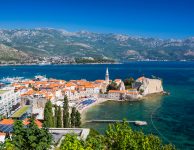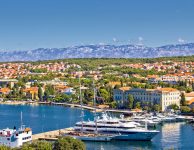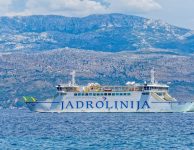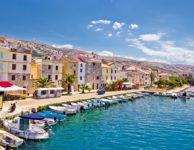In a country with more than a million tourists, the Government is preparing a turnaround and a strategy for the development of sustainable tourism until 2030.
In a country with more than a million tourists, the Government is preparing a turnaround and a strategy for the development of sustainable tourism until 2030.
Due to global challenges and rising energy prices, the green and digital transition are becoming imperative in the tourism business, Minister Nikolina Brnjac points out. The number of tourists in Croatia exceeded one million, and that was a week earlier than last year. There are currently 1.012 million guests here and the Adriatic rush is quite similar to the best tourist years.
True, in order to exceed the record numbers from 2019, there are still less than thirty thousand missing, but an excellent August and a very good September are expected, so by the end of 2022 we could witness a repeat of the best tourist year so far. That comes with all the pluses and minuses that the rush hour of more than a million tourists a day brings and which on our coast stifles both infrastructure and everyday life.
Tourism as a lifestyle
At the same time, the guests themselves don’t enjoy wasting their vacation time waiting in the crowds, on which they do not have much chance to experience the typical everyday life of our small and large “towns”, that is, the lifestyle that makes each country recognizable and attractive. It is more or less clear to everyone in tourism that something needs to change, and the current tourism authorities imagine the future of Croatian tourism differently.
According to the vision from the Ministry of Tourism, by 2030 there should be a strong shift towards socially, environmentally and economically sustainable year-round tourism, which valorizes the natural and cultural heritage and unique identity of each individual region. Or, as
The World Tourism Organization described it as tourism “whose development meets the needs of today’s generation without diminishing the ability of future generations to meet their needs”.
The key feature of tomorrow’s tourism should be authenticity, which, in addition to the diversity of regions and rich natural and cultural heritage, is also evoked by hospitable, open and warm-hearted people. Such tourism is more than entrepreneurship, it is practically a way of life. All of this is outlined in the proposal of the Strategy for the Development of Sustainable Tourism until 2030, which will, with the Strategic Environmental Impact Assessments, be submitted to e-Consultation with the interested public these days.
The priority is to protect and present tourism resources even better, to stop seasonality and excessive loading of limited space, and to preserve the welcoming spirit of the hosts. The focus is on quality and innovation, and priority should be given to investments that will encourage harmonious economic development and equal progress of all regions.
On the basis of the Strategy, the National Plan for the Development of Sustainable Tourism until 2027 is being prepared, which will elaborate concrete measures, and will be adopted in parallel with the Strategy.
The turn towards this new, more substantial, better quality and fairer tourism will certainly be facilitated by the financial resources available to Croatia as a member of the EU, while the current global situation could speed up the transition.
– Precisely because of global challenges and rising energy prices, the green and digital transition are becoming imperative in the tourism business. Fortunately, many hotel facilities have already recognized this, and the provided grants within the framework of the National Recovery and Resilience Plan will further encourage this necessary transition – said Minister of Tourism Nikolina Brnjac, commenting on the fact that in the current part of the tourist year, Croatia achieves about 95 percent tourist traffic from the same period in 2019.
The season, by the way, is running with a deficit of about 5,000 workers in the hotel industry and a deficit of even 10,000 in the catering industry, writes Večernji list. The new Strategy can indirectly alleviate this problem in the long term, but the Croatian Tourism Association appeals that this problem should not be ignored even now “because the surrounding more developed countries could only make it even more difficult to retain domestic workers and attract foreign workers to Croatia with their incentive measures”.
Few workers
– We expect the Government to define as soon as possible concrete measures for stronger activation of the potential of the domestic labor force, better retention of seasonal workers and simplification and acceleration of the process of importing foreign labor – says Veljko Ostojić, director of the Croatian Tourism Association, who also notes that the accommodation structure remains one of the biggest challenges of Croatian tourism.
The number of beds in household facilities reached 620 thousand, and there are another 610 thousand in non-commercial accommodation. There are only 180,000 hotel beds, which is practically a drop in the total number of registered beds. HUT says that such a structure of accommodation capacity is primarily a consequence of the current tax system and that thanks to these “excessive” beds, Croatia suffers enormous pressure on the infrastructure, and on the other hand, it does not achieve optimal tourism effects.
– Changing the accommodation structure will be one of the biggest challenges for Croatian tourism in the future, especially through regulations that define the use of the real estate for short-term tourist rental- Ostojić believes. The strategy and plan for the development of sustainable tourism, which the public will get to see, will offer answers to that.
Source: morski.hr






